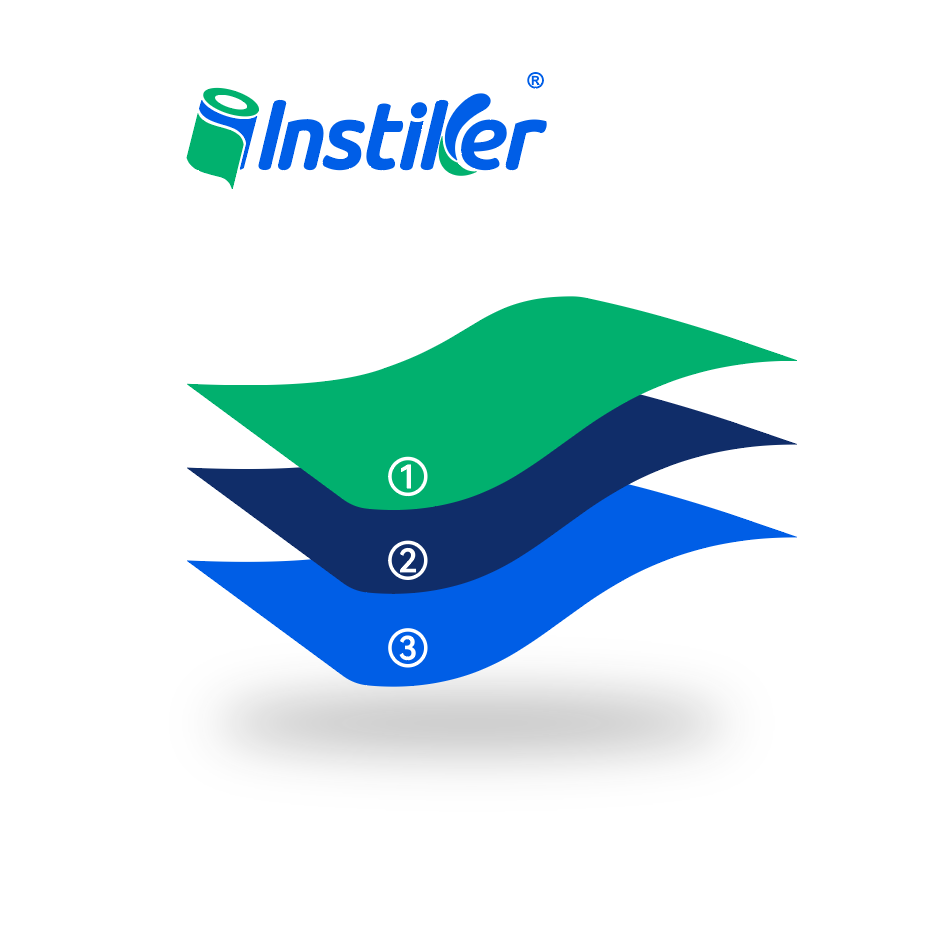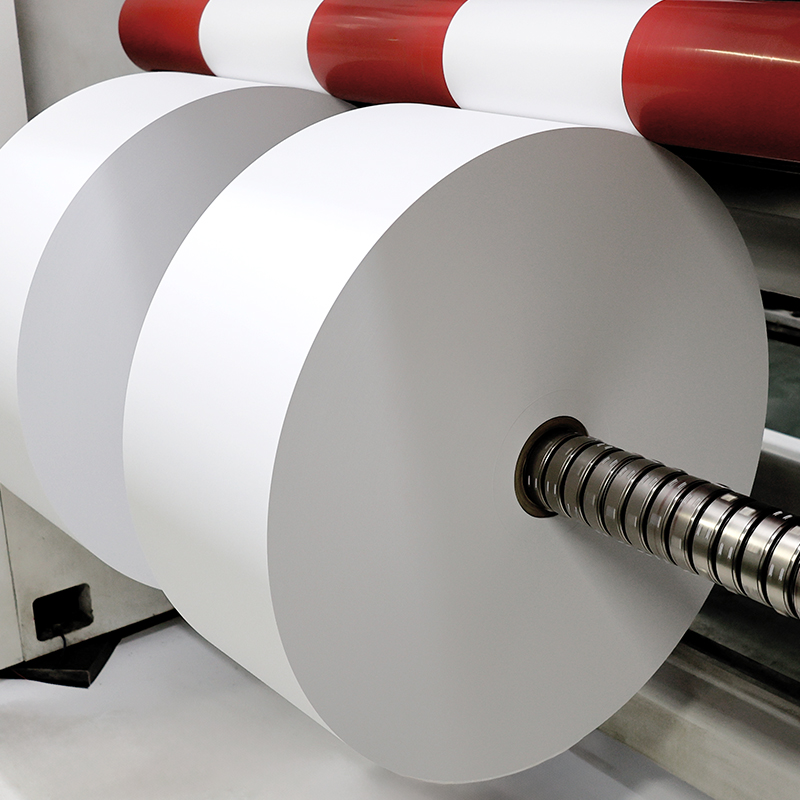Email:
Tel:
+86-18023461748
378 Maxin Road , Zhongluotan Town ,
Baiyun District , Guangzhou City China













YH22567
Instiker
| Color: | |
|---|---|
| Size: | |
| Material: | |
| Application: | |
| Availability: | |
| Quantity: | |

Product Name: 75μ Matt White PP Acrylic 30μ PET
1. Face Stock: Matt White PP
Caliper (μm): 72±5% GB/T 451.3-2003
Weight (g/㎡): 54±5% GB/T 451.2-2002
2. Adhesive Performance: Acrylic
Initial Adhesion (N): 16.77 FTM 9
20 min.180'Peel Adhesion (N/25mm) : 8.78/8.78 FTM 1
20 min.90'Peel Adhesion (N/25mm): 8.75 FTM 2
Storage Temperature: -15°C to 70°C
Minimum Lakelling Temperature: 10°C
3. Liner: PET
Caliper (μm): 30±5% GB/T 451.3-2003
Weight (g/㎡): 41±5% GB/T 451.3-2003
It can be stored for 1 year at the temperature of 23+2°C and relative humidity of 50+5%
It is widely used in bar code printing and normal printing, die-cutting performance is excel-White Glassine lent. Excellent performance on many packaging materials.
It is widely used in various printing processes. Attention should be paid to controlling the viscosity of the ink to avoid the loss of the coating caused by over-viscous ink. Avoid exces-sive rewinding tension, which may cause label glue overflow. Simple text printing and bar code printing are recommended.
* High-end consumer product labels:
- Matte labels for wine bottles, enhancing the hand feel and visual high-end sense.
- Instruction manual labels for electronic products (such as the matte surface resists glare).
* Industrial scenes:
- Identification labels for mechanical equipment operation panels, resistant to oil and easy to clean.
- Warehouse shelf labels, where the matte surface reduces the interference of light reflection.
* Limitations: The matte coating may reduce the ink adhesion, and pretreatment or special inks are required.
Q: Is this label fully recyclable?
A: Yes, the synthetic face stock and recycled kraft liner are both recyclable in plastic and paper streams, respectively. Remove adhesive residue before recycling.
Q: Can it be composted?
A: The face stock and adhesive are certified for industrial composting (OK Compost Industrial), breaking down into organic matter within 12 weeks under controlled conditions.
Q: How does it compare to traditional paper labels in wet environments?
A: The synthetic fibers repel water, making it 300% more moisture-resistant than kraft or paper labels, ideal for refrigerated or outdoor applications.
Q: Does the eco-friendly adhesive affect bonding strength?
A: No, the plant-based adhesive matches the performance of traditional acrylic adhesives, with a peel adhesion of 10N/25mm on stainless steel, ensuring reliable substrate bonding.



Product Name: 75μ Matt White PP Acrylic 30μ PET
1. Face Stock: Matt White PP
Caliper (μm): 72±5% GB/T 451.3-2003
Weight (g/㎡): 54±5% GB/T 451.2-2002
2. Adhesive Performance: Acrylic
Initial Adhesion (N): 16.77 FTM 9
20 min.180'Peel Adhesion (N/25mm) : 8.78/8.78 FTM 1
20 min.90'Peel Adhesion (N/25mm): 8.75 FTM 2
Storage Temperature: -15°C to 70°C
Minimum Lakelling Temperature: 10°C
3. Liner: PET
Caliper (μm): 30±5% GB/T 451.3-2003
Weight (g/㎡): 41±5% GB/T 451.3-2003
It can be stored for 1 year at the temperature of 23+2°C and relative humidity of 50+5%
It is widely used in bar code printing and normal printing, die-cutting performance is excel-White Glassine lent. Excellent performance on many packaging materials.
It is widely used in various printing processes. Attention should be paid to controlling the viscosity of the ink to avoid the loss of the coating caused by over-viscous ink. Avoid exces-sive rewinding tension, which may cause label glue overflow. Simple text printing and bar code printing are recommended.
* High-end consumer product labels:
- Matte labels for wine bottles, enhancing the hand feel and visual high-end sense.
- Instruction manual labels for electronic products (such as the matte surface resists glare).
* Industrial scenes:
- Identification labels for mechanical equipment operation panels, resistant to oil and easy to clean.
- Warehouse shelf labels, where the matte surface reduces the interference of light reflection.
* Limitations: The matte coating may reduce the ink adhesion, and pretreatment or special inks are required.
Q: Is this label fully recyclable?
A: Yes, the synthetic face stock and recycled kraft liner are both recyclable in plastic and paper streams, respectively. Remove adhesive residue before recycling.
Q: Can it be composted?
A: The face stock and adhesive are certified for industrial composting (OK Compost Industrial), breaking down into organic matter within 12 weeks under controlled conditions.
Q: How does it compare to traditional paper labels in wet environments?
A: The synthetic fibers repel water, making it 300% more moisture-resistant than kraft or paper labels, ideal for refrigerated or outdoor applications.
Q: Does the eco-friendly adhesive affect bonding strength?
A: No, the plant-based adhesive matches the performance of traditional acrylic adhesives, with a peel adhesion of 10N/25mm on stainless steel, ensuring reliable substrate bonding.


Synthetic paper self-adhesive is a type of self-adhesive material made by coating synthetic polymer materials (such as polypropylene (PP), polyethylene (PE), polyvinyl chloride (PVC), etc.) on the surface with adhesive. It simulates the appearance and printability of traditional paper, but is essentially made of plastic, combining the ease of processing of paper with the durability of plastic. It is often used in label scenarios that require water resistance, tear resistance or weather resistance.
The acrylic adhesive provides a strong and reliable bond. It adheres well to a wide range of surfaces, including plastic, metal, and cardboard. This adhesive is resistant to environmental factors such as humidity and moderate temperature changes, ensuring that the labels stay firmly in place over time.
PET liner refers to self-adhesive liner made from Polyethylene Terephthalate (PET for short) as the base material, and it belongs to a type of plastic liner. It is usually used as the supporting material for self-adhesive labels, for carrying face materials (such as label paper, film, etc.) and adhesives, and can be peeled off and discarded when the labels are in use.

Synthetic paper self-adhesive is a type of self-adhesive material made by coating synthetic polymer materials (such as polypropylene (PP), polyethylene (PE), polyvinyl chloride (PVC), etc.) on the surface with adhesive. It simulates the appearance and printability of traditional paper, but is essentially made of plastic, combining the ease of processing of paper with the durability of plastic. It is often used in label scenarios that require water resistance, tear resistance or weather resistance.
The acrylic adhesive provides a strong and reliable bond. It adheres well to a wide range of surfaces, including plastic, metal, and cardboard. This adhesive is resistant to environmental factors such as humidity and moderate temperature changes, ensuring that the labels stay firmly in place over time.
PET liner refers to self-adhesive liner made from Polyethylene Terephthalate (PET for short) as the base material, and it belongs to a type of plastic liner. It is usually used as the supporting material for self-adhesive labels, for carrying face materials (such as label paper, film, etc.) and adhesives, and can be peeled off and discarded when the labels are in use.

UV ink and water-based ink are applicable. It can be used for letterpress, flexographic, screen printing, etc., but not for adhesive printing. Thermal transfer and resin ribbon printing are available. Ink and ribbon testing before printing is necessary. Avoid printing on the edge of the label, especially for screen UV ink and UV varnish. To ensure smooth processing please use a sharp film-specific die-cutting knife, especially in flat-pressed die-cutting methods.
UV ink and water-based ink are applicable. It can be used for letterpress, flexographic, screen printing, etc., but not for adhesive printing. Thermal transfer and resin ribbon printing are available. Ink and ribbon testing before printing is necessary. Avoid printing on the edge of the label, especially for screen UV ink and UV varnish. To ensure smooth processing please use a sharp film-specific die-cutting knife, especially in flat-pressed die-cutting methods.